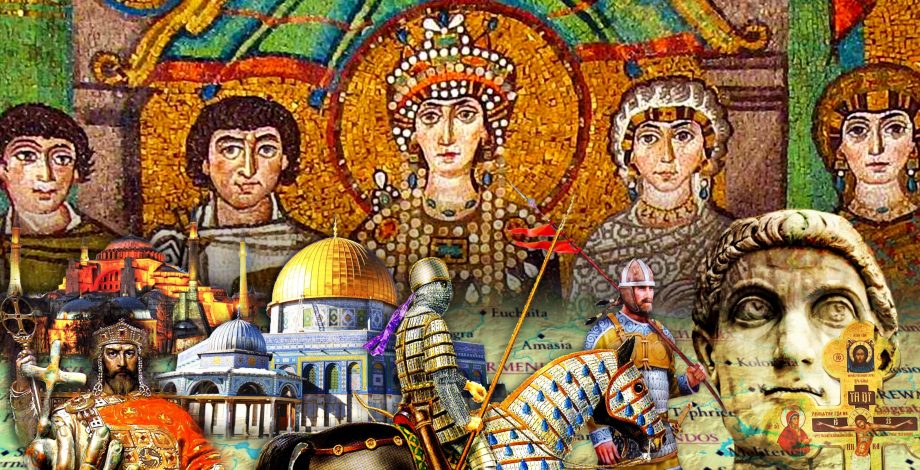
Michael III “the Drunkard” and Basil “the Macedonian” (scanned from Treadgold, originally from the Modena copy of John Zonaras’ history)
We chart the rise of Basil the Macedonian and his murder of both Bardas and Michael. We also look at how Basil’s descendants would re-brand Michael as “the Drunkard” before saying goodbye to the Amorion Dynasty.
Period: 866-867
Download: Keeping up with the Macedonians
RSS Feed: The History of Byzantium
If you want to send in feedback to the podcast:
– Either comment on this post.
– Or on the facebook page.
– Leave a review on Itunes.
– Follow me on Twitter.


You’re doing a great job with the podcast, this episode was great. I’m happy to see tHoB in my feed, and the sale episodes have both really been worth it. Keep it up.
I also really liked the format today where you started with the skeleton, and then fleshed it out. It helped me get the broad strokes and settle into the details.
This is a great innovation, I’d suggest you stick with it.
Thanks Robin for another exciting podcast. I’m always refreshing my podcast feed hoping for another podcast to be released. I do like how you tie this story in with examples from earlier in Byzantine History. The fact that Basil would go on to found a successful dynasty does call us to question the actions of the former emperor he deposed. If Basil had been deposed himself I wonder if history would have remembered him to be more like a usurper like Phocas?
Yes absolutely! He would have been vilified.
Another great episode Robin. A few weeks ago I said I’d take a long break from listening until enough of a backlog built up so that I could marathon what I missed. Well I couldn’t stay away, instead I went back to Maurice and decided to re-listen to all the narrative episodes from there!
I have a question which maybe I should save for the ‘end of the century’ episodes, but I’m not sure it would fit because it’s not really century specific. But I’ve been wondering – what’s going on in Dacia? How did a Latin language survive here to the modern day with Slavic and Steppe tribes settling in all around them? Were the Huns and Avars who occupied the area content to rule over a Latin speaking population similar to how the Avars and Bulgars dealt with their Slavic subjects? Why didn’t Slavs move in the same numbers that they did other former Roman provinces – was Dacia more heavily populated with Latinized people than other former Imperial holdings? Any thoughts you have would be appreciated! Apologies if you’ve already discussed the subject.
Also, I want to thank you for the recommending the Bulgarian History Podcast at the start of one of your older episodes – I’ve been listening to them in parallel with yours. These two podcasts compliment each-other well!
Eudokia Ingerina was a daughter of a Varangian guard. Constantine VII Porphyrogennetos, her offspring, was later described as having light features and blue eyes, which may suggest a nordic descent. I wonder if the Macedonian dynasty was Basil’s and Ingerina’s indeed.
Anyway, just a wild speculation. Another great episode, thanks Robin!
This usurpation leads me to ask an end of century question: were the Byzantine civil, military, and religious bureaucracies strong enough to withstand such upheavals with a minimum of disruption? That is, was there a Byzantine “deep state” by this point that could provide any emperor with a strong starting point to their reign?
Ooh, so much drama!
I also wanted to say that throughout these episodes I’ve really appreciated how thoroughly you’ve looked at iconoclasm and its politics and its relation to Roman/Byzantine identity. I’ve found all of that super interesting!